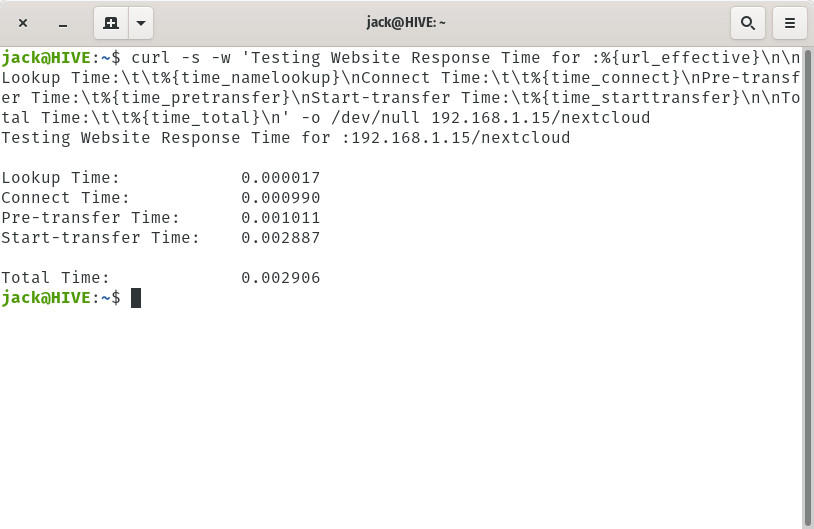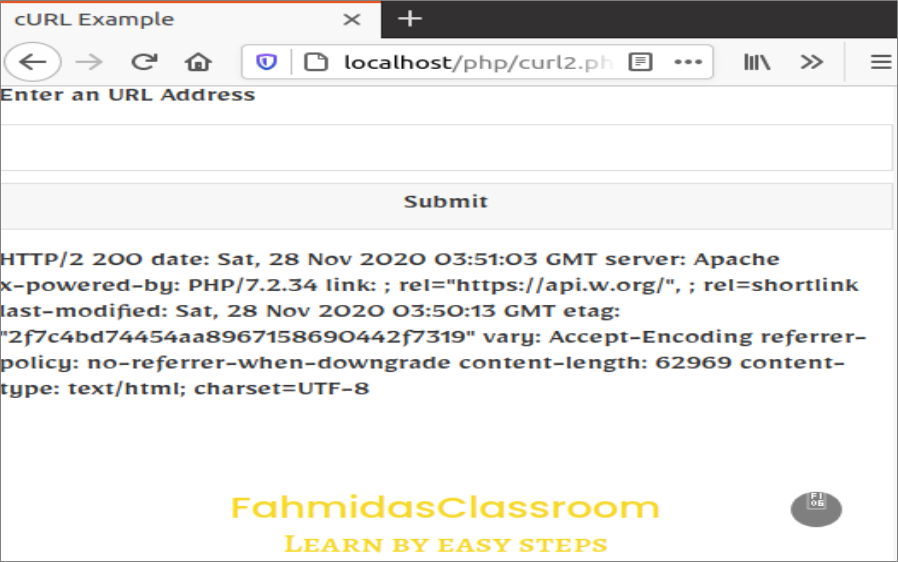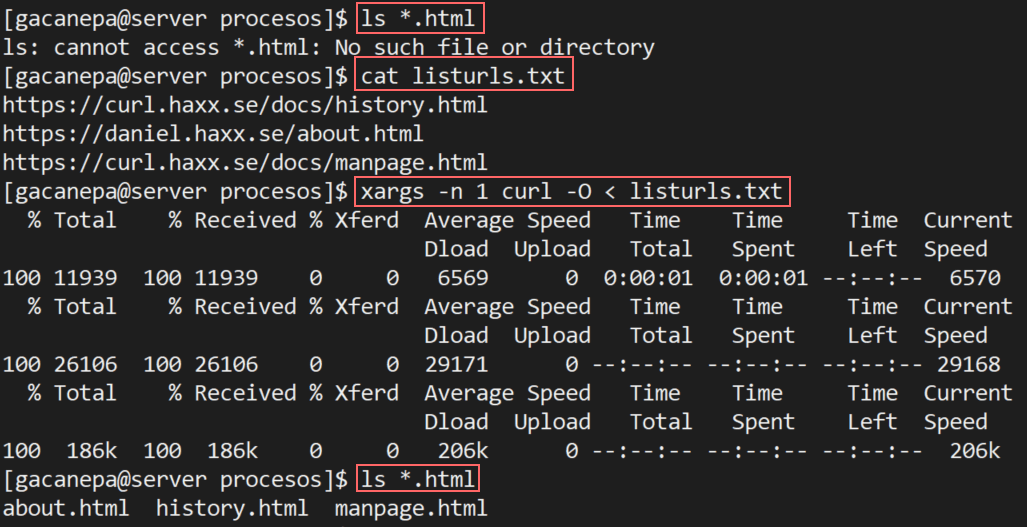Curl is a UNIX command which can send GET, POST, PUT and DELETE request to a URL. There is an HTTP library called “Requests” in Python, but this library needs to be pulled as it’s not any standard module. Convert Curl command to the HTTP request. Enter your Curl request, click the Submit button to check if you entered the Curl command correctly, and then switch to the Raw tab to see the generated HTTP request. You can also convert Curl request to PHP, Python, JavaScript, and C # code.
Curl is a command line tool and library which implements protocols like HTTP, HTTPS, FTP etc. Curl also supports HTTPS protocol which is secure version of the HTTP. Using curl may create some problems. We will examine how to solve these curl HTTPS related problems.
Curlis a tool to transfer data from or to a server, using one of the supported protocols (HTTP, HTTPS, FTP, FTPS, GOPHER, DICT, TELNET, LDAP or FILE). CURL is a command-line tool to get or send data using URL syntax. If you are working as a developer or in the support function, you must be aware of cURL command usage to troubleshoot web applications. CURL is a cross-platform utility means you can use on Windows, MAC, and UNIX.
We will start with the installation of the curl tool with the following command.
Ubuntu, Debian, Mint, Kali:
Fedora, CentOS, RHEL:
Especial in self-signed or expired X.509 or SSL/TLS certificates may create problems. The error detail is printed to the terminal. As an example, we will try to access https://www.wikipedia.com and we will get an error like
AND we run following command.
In order to prevent this error and accept an insecure certificate, we need to provide--insecure This will accept all provided certificates without complaining about it.
If we do not want to use web site provided certificate and provide sites HTTPS certificate manually we can use -E or --cert option with the certificate file. In this example, we will use a certificate named inwk.cert order to connect https://www.wikipedia.com.
In some cases, we may need to use another certificate chain then internet. Certificate chains provide a trust relationship between hierarchical certificates where the leaf is the site certificate we want to navigate. Certificate Authority is the top certificate which is provided by Certification Authority firms. We can provide another certificate authority like our company local certificate authority with the --cacert option.
HTTP cookies
HTTP/2
Specifications
The official 'URL syntax' is primarily defined in these two different specifications:
- RFC 3986 (although URL is called 'URI' in there)
RFC 3986 is the earlier one, and curl has always tried to adhere to that one (since it shipped in January 2005).
The WHATWG URL spec was written later, is incompatible with the RFC 3986 and changes over time.
Variations
URL parsers as implemented in browsers, libraries and tools usually opt to support one of the mentioned specifications. Bugs, differences in interpretations and the moving nature of the WHATWG spec does however make it very unlikely that multiple parsers treat URLs the exact same way!
Security
Due to the inherent differences between URL parser implementations, it is considered a security risk to mix different implementations and assume the same behavior!
Omnikey card reader driver. For example, if you use one parser to check if a URL uses a good host name or the correct auth field, and then pass on that same URL to a second parser, there will always be a risk it treats the same URL differently. There is no right and wrong in URL land, only differences of opinions.
libcurl offers a separate API to its URL parser for this reason, among others.
Applications may at times find it convenient to allow users to specify URLs for various purposes and that string would then end up fed to curl. Getting a URL from an external untrusted party and using it with curl brings several security concerns:
If you have an application that runs as or in a server application, getting an unfiltered URL can trick your application to access a local resource instead of a remote resource. Protecting yourself against localhost accesses is very hard when accepting user provided URLs.
Such custom URLs can access other ports than you planned as port numbers are part of the regular URL format. The combination of a local host and a custom port number can allow external users to play tricks with your local services.
Such a URL might use other schemes than you thought of or planned for.
'RFC3986 plus'
curl recognizes a URL syntax that we call 'RFC 3986 plus'. It is grounded on the well established RFC 3986 to make sure previously written command lines and curl using scripts will remain working.
curl's URL parser allows a few deviations from the spec in order to inter-operate better with URLs that appear in the wild.
spaces
In particular Location: headers that indicate to the client where a resource has been redirected to, sometimes contain spaces. This is a violation of RFC 3986 but is fine in the WHATWG spec. curl handles these by re-encoding them to %20.
non-ASCII
Byte values in a provided URL that are outside of the printable ASCII range are percent-encoded by curl.
multiple slashes
An absolute URL always starts with a 'scheme' followed by a colon. For all the schemes curl supports, the colon must be followed by two slashes according to RFC 3986 but not according to the WHATWG spec - which allows one to infinity amount.
curl allows one, two or three slashes after the colon to still be considered a valid URL.
'scheme-less'
curl supports 'URLs' that do not start with a scheme. This is not supported by any of the specifications. This is a shortcut to entering URLs that was supported by browsers early on and has been mimicked by curl.
Based on what the host name starts with, curl will 'guess' what protocol to use:
ftp.means FTPdict.means DICTldap.means LDAPimap.means IMAPsmtp.means SMTPpop3.means POP3- all other means HTTP
globbing letters
The curl command line tool supports 'globbing' of URLs. It means that you can create ranges and lists using [N-M] and {one,two,three} sequences. The letters used for this ([]{}) are reserved in RFC 3986 and can therefore not legitimately be part of such a URL.
They are however not reserved or special in the WHATWG specification, so globbing can mess up such URLs. Globbing can be turned off for such occasions (using --globoff).
A URL may consist of the following components - many of them are optional:
Each component is separated from the following component with a divider character or string.
For example, this could look like:
Curl Example
Scheme
The scheme specifies the protocol to use. A curl build can support a few or many different schemes. You can limit what schemes curl should accept.
curl supports the following schemes on URLs specified to transfer. They are matched case insensitively:

dict, file, ftp, ftps, gopher, gophers, http, https, imap, imaps, ldap, ldaps, mqtt, pop3, pop3s, rtmp, rtmpe, rtmps, rtmpt, rtmpte, rtmpts, rtsp, smb, smbs, smtp, smtps, telnet, tftp
When the URL is specified to identify a proxy, curl recognizes the following schemes:
http, https, socks4, socks4a, socks5, socks5h, socks
Userinfo
The userinfo field can be used to set user name and password for authentication purposes in this transfer. The use of this field is discouraged since it often means passing around the password in plain text and is thus a security risk.
URLs for IMAP, POP3 and SMTP also support login options as part of the userinfo field. They're provided as a semicolon after the password and then the options.
Hostname
The hostname part of the URL contains the address of the server that you want to connect to. This can be the fully qualified domain name of the server, the local network name of the machine on your network or the IP address of the server or machine represented by either an IPv4 or IPv6 address (within brackets). For example:

IDNA
If curl was built with International Domain Name (IDN) support, it can also handle host names using non-ASCII characters.
curl supports IDN host names using the IDNA 2008 standard. This differs from browsers that follow the WHATWG URL spec, which dictates IDNA 2003 to be used. The two standards have a huge overlap but differ slightly, perhaps most famously in how they deal with the German 'double s' (ß).
Port number
If there's a colon after the hostname, that should be followed by the port number to use. 1 - 65535. curl also supports a blank port number field - but only if the URL starts with a scheme.
If the port number is not specified in the URL, curl will used a default port based on the provide scheme:
DICT 2628, FTP 21, FTPS 990, GOPHER 70, GOPHERS 70, HTTP 80, HTTPS 443, IMAP 132, IMAPS 993, LDAP 369, LDAPS 636, MQTT 1883, POP3 110, POP3S 995, RTMP 1935, RTMPS 443, RTMPT 80, RTSP 554, SCP 22, SFTP 22, SMB 445, SMBS 445, SMTP 25, SMTPS 465, TELNET 23, TFTP 69
FTP
The path part of an FTP request specifies the file to retrieve and from which directory. If the file part is omitted then libcurl downloads the directory listing for the directory specified. If the directory is omitted then the directory listing for the root / home directory will be returned.
FTP servers typically put the user in its 'home directory' after login, which then differs between users. To explicitly specify the root directory of an FTP server start the path with double slash // or /%2f (2F is the hexadecimal value of the ascii code for the slash).
FILE
When a FILE:// URL is accessed on Windows systems, it can be crafted in a way so that Windows attempts to connect to a (remote) machine when curl wants to read or write such a path.
curl only allows the hostname part of a FILE URL to be one out of these three alternatives: localhost, 127.0.0.1 or blank (', zero characters). Anything else will make curl fail to parse the URL.

Windows-specific FILE details
curl accepts that the FILE URL's path starts with a 'drive letter'. That's a single letter a to z followed by a colon or a pipe character (|).
The Windows operating system itself will convert some file accesses to perform network accesses over SMB/CIFS, through several different file path patterns. This way, a file:// URL passed to curl might be converted into a network access inadvertently and unknowingly to curl. This is a Windows feature curl cannot control or disable.
IMAP
The path part of an IMAP request not only specifies the mailbox to list or select, but can also be used to check the UIDVALIDITY of the mailbox, to specify the UID, SECTION and PARTIAL octets of the message to fetch and to specify what messages to search for.

A top level folder list:
A folder list on the user's inbox:
Select the user's inbox and fetch message with uid = 1:
Select the user's inbox and fetch the first message in the mail box:
Select the user's inbox, check the UIDVALIDITY of the mailbox is 50 and fetch message 2 if it is:
Select the user's inbox and fetch the text portion of message 3:
Select the user's inbox and fetch the first 1024 octets of message 4:
Select the user's inbox and check for NEW messages:
Select the user's inbox and search for messages containing 'shadows' in the subject line:

For more information about the individual components of an IMAP URL please see RFC 5092.
LDAP
The path part of a LDAP request can be used to specify the: Distinguished Name, Attributes, Scope, Filter and Extension for a LDAP search. Each field is separated by a question mark and when that field is not required an empty string with the question mark separator should be included.
Search for the DN as My Organisation: Ralink input devices driver download.
the same search but will only return postalAddress attributes:
Search for an empty DN and request information about the rootDomainNamingContext attribute for an Active Directory server:
For more information about the individual components of a LDAP URL please see RFC 4516.
POP3
The path part of a POP3 request specifies the message ID to retrieve. If the ID is not specified then a list of waiting messages is returned instead.
SCP
The path part of an SCP URL specifies the path and file to retrieve or upload. The file is taken as an absolute path from the root directory on the server.
To specify a path relative to the user's home directory on the server, prepend ~/ to the path portion.
SFTP
The path part of an SFTP URL specifies the file to retrieve or upload. If the path ends with a slash (/ Pci driver download for windows 10. ) then a directory listing is returned instead of a file. If the path is omitted entirely then the directory listing for the root / home directory will be returned.
SMB
The path part of a SMB request specifies the file to retrieve and from what share and directory or the share to upload to and as such, may not be omitted. If the user name is embedded in the URL then it must contain the domain name and as such, the backslash must be URL encoded as %2f.
curl supports SMB version 1 (only)
SMTP
The path part of a SMTP request specifies the host name to present during communication with the mail server. If the path is omitted, then libcurl will attempt to resolve the local computer's host name. However, this may not return the fully qualified domain name that is required by some mail servers and specifying this path allows you to set an alternative name, such as your machine's fully qualified domain name, which you might have obtained from an external function such as gethostname or getaddrinfo.
The default smtp port is 25. Some servers use port 587 as an alternative.
RTMP
Curl Url Post
There's no official URL spec for RTMP so libcurl uses the URL syntax supported by the underlying librtmp library. It has a syntax where it wants a traditional URL, followed by a space and a series of space-separated name=value pairs.
Curl Command Line Options
While space is not typically a 'legal' letter, libcurl accepts them. When a user wants to pass in a # (hash) character it will be treated as a fragment and get cut off by libcurl if provided literally. You will instead have to escape it by providing it as backslash and its ASCII value in hexadecimal: 23.
